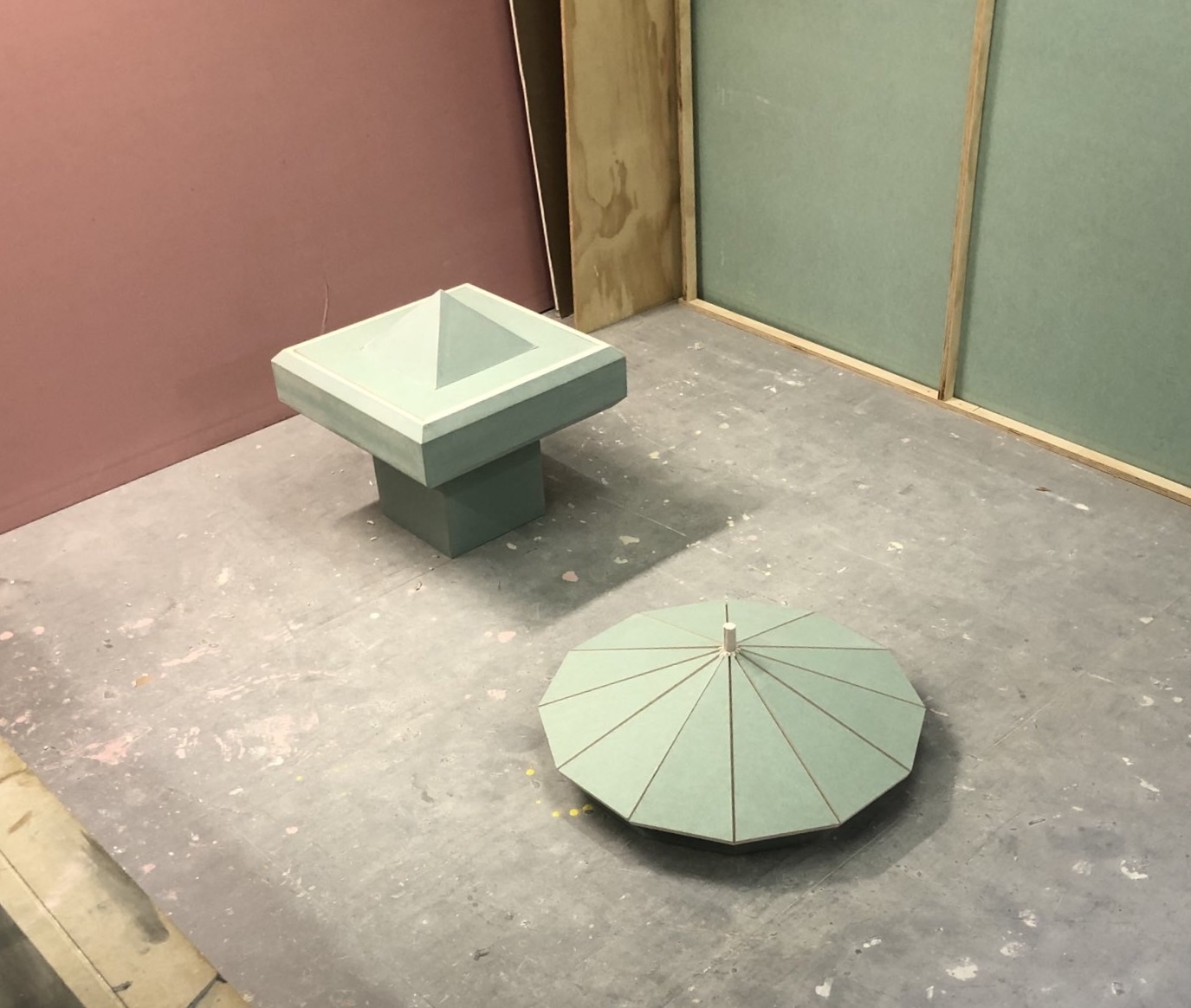
a text written to accompany an exhibition of new sculpture by Jack Eden at Pompstraat 44 C, Rotterdam, September 2022.
Jack Eden is a translator. He takes something, decodes, and transforms it. He does this professionally, working on articles and essays, but it is also the foundation of his sculptural practice. For example, he might take the measurements from a painting, particular details from an architectural blueprint, or the shape of a municipal plinth; and then, through a process of examination, excavation, adaptation, and rephrasing, create something familiar, yet entirely new. This latest series of sculptures borrow the geometry of roof objects – vents, apertures, skylights, steeples and the like. These are things that exist semi-hidden, glimpsed from street level, seen in part, their functionality often cloaked with ornamentation. The sculptures Jack makes in response are a fraction of the size and are constructed from plasterboard – readily available and utilitarian – but like these roof objects it’s a material that is not necessarily meant to be seen. However, these sculptures aren't created to draw our attention to roof objects, or to celebrate them, nor are they a comment on society’s apparent lack of observation. The artist is instead interested in understanding materiality and process as a journey. What can be discovered in these acts of translation? Conversely, what becomes lost?
Take for example a bilingual book of poetry. The original text on one page, the reworked version in translation on the opposite. The poet’s mother-tongue, rhythms and flows are archived, but it’s the new interpretation alongside that becomes the means of understanding. This is precisely the case with Jack’s sculptures; they are about giving visibility to process, and allowing us to reconsider the act of making. These sculptures are created to be displayed on a rooftop, completely concealed from view until you ascend the staircase to meet them. Instead of looking up from the ground, you then gaze downwards onto them, uncannily towering above the objects whilst also elevated above the cityscape. This is something likewise experienced in Jack’s Rotterdam studio. It’s split-level, the ground floor neatly crammed with plasterboard, wood, power tools, and paint tins, and on a mezzanine, a desk, a day bed, and shelves replete with books. This elevated vantage point, a place of contemplation positioned above a space of making, has certainly informed a rethinking of perceptions in scale and height. It has also changed the approach and finish of the sculptures...
From a distance, the newly conceived roof-object sculptures are, at first, read as harmonious and solidly architectural. Look closer, however, and the exertions and happenstance of the hand in the course their making are revealed. Gypsum dribbles between the points where two pieces of plasterboard meet, uneven surfaces are exposed, some edges concede their rawness. These are not passive, they are functioning; the thinking through of ideas, a translation, an exploration evidenced. For all their perceived simplicity, Jack’s works are truly complex, and laden with fastidious research. To put it simply, they are sculptures about making sculpture.
View more of Jack's work here.